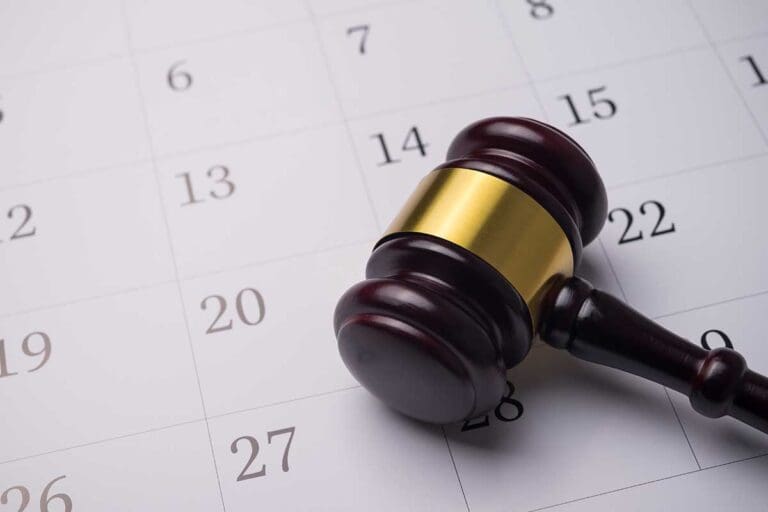Why Documentation is Critical
Personal injury claims are complex and require evidence to prove fault, establish damages, and demonstrate the impact of the injury on your life. Documents like medical records, photos of the scene, and financial receipts help create a detailed narrative of what happened and why you deserve compensation.
- Proving Fault: Documentation such as police reports and witness statements can show how the other party’s negligence caused the accident.
- Establishing Damages: Medical bills, pay stubs, and repair invoices quantify the financial impact of the accident.
- Justifying Non-Economic Damages: Journals and medical evaluations can support claims for pain and suffering or emotional distress.
Essential Documents for Personal Injury Claims
Thorough documentation can make or break your case. Here are the most important types of records to gather:
1. Medical Records
Medical records are the backbone of most personal injury claims. They provide proof of your injuries, the treatment required, and the connection between the accident and your condition. Examples of critical medical documents include:
- Doctor’s notes that describe your injuries and treatment plans.
- Emergency room reports detailing initial assessments and procedures.
- Prescriptions and invoices for medications or medical devices.
- Physical therapy evaluations and progress reports.
- Diagnostic test results, such as X-rays, MRIs, or CT scans.
2. Police or Incident Reports
Official reports provide an unbiased account of the accident. These records are especially important for cases involving car accidents, workplace injuries, or incidents on public property. A good report typically includes:
- Date, time, and location of the incident.
- Names and contact information for all parties involved.
- Witness statements.
- Citations or tickets issued to any party.
- Observations about weather, road conditions, or other relevant factors.
3. Photographic and Video Evidence
Visual documentation is one of the most compelling forms of evidence in personal injury cases. Use photos and videos to:
- Capture the accident scene, including skid marks, vehicle damage, or hazardous conditions.
- Document your injuries over time, from the immediate aftermath to the healing process.
- Show any damaged personal property, such as vehicles, clothing, or electronics.
4. Witness Statements
Witnesses can provide additional perspectives on what happened during the accident. Gather written or recorded statements that include:
- What the witness saw.
- The time and location of the incident.
- The witness’s contact information for future reference.
5. Financial Records
Financial records are essential for calculating the monetary impact of your injury. These documents may include:
- Pay stubs or employment records to show lost wages or reduced earning capacity.
- Bills and invoices for medical treatments, home modifications, or mobility aids.
- Receipts for expenses related to transportation, such as taxis or car rentals.
6. Insurance Information
Keep copies of your insurance policies and any correspondence with your insurer. This might include:
- Policy declarations outlining your coverage.
- Claim forms and adjuster reports.
- Letters about settlement offers or disputes.
How to Gather Documentation
Collecting the necessary documents can be time-consuming, but it’s a vital part of building a strong case. Follow these steps to ensure you have everything you need:
Request Records Immediately
- Contact medical providers, police departments, and insurance companies as soon as possible after the accident.
- Be prepared to pay small fees for copies of certain documents, like medical records or police reports.
Keep a Detailed Record of Your Recovery
- Write a daily journal describing your physical pain, emotional challenges, and the impact of your injuries on daily life.
- Take photos of your injuries at various stages of healing to illustrate their severity.
Work with an Attorney
An experienced personal injury attorney can help you identify which documents are most important and ensure nothing is overlooked. They can also issue subpoenas for records that may be difficult to obtain on your own.
Common Challenges with Documentation
While gathering documents is essential, there are challenges you might face along the way:
- Delays in Medical Records: Hospitals and clinics may take weeks to process requests.
- Missing Police Reports: If no report was filed at the scene, it can be harder to prove fault.
- Incomplete Evidence: Failing to document injuries or the scene properly can weaken your case.
To address these issues:
- Follow up regularly with providers and authorities to ensure timely delivery of records.
- Use alternative evidence, such as photos or witness statements, if official records are unavailable.
Staying Organized
Keeping your documentation organized will save time and reduce stress. Here are some tips to stay on top of your records:
Create a Central File
- Use a binder, folder, or digital storage system to keep all documents in one place.
- Label sections for medical records, police reports, photos, financial records, and correspondence.
Back Up Digital Copies
- Scan hard copies of important documents and save them in the cloud or on an external hard drive.
- Use apps or software designed for case management to track deadlines and store files.
Track Deadlines
- Create a timeline of key events, including the date of the accident, medical treatments, and legal milestones.
- Mark deadlines for filing claims, submitting evidence, or responding to insurance companies.
How Documentation Impacts Your Settlement
Strong documentation not only strengthens your case but can also influence the size of your settlement. Insurance companies often base their offers on the evidence presented. Comprehensive records can:
- Demonstrate the full extent of your injuries and their impact on your life.
- Support claims for future medical expenses or long-term care.
- Show that you are prepared to take the case to court if necessary, encouraging a fair settlement.
Conclusion
Documentation is the foundation of any successful personal injury claim. From medical records and police reports to financial receipts and photographs, every piece of evidence plays a role in building your case. By staying organized, gathering evidence promptly, and working with an experienced attorney, you can maximize your chances of securing the compensation you deserve.







